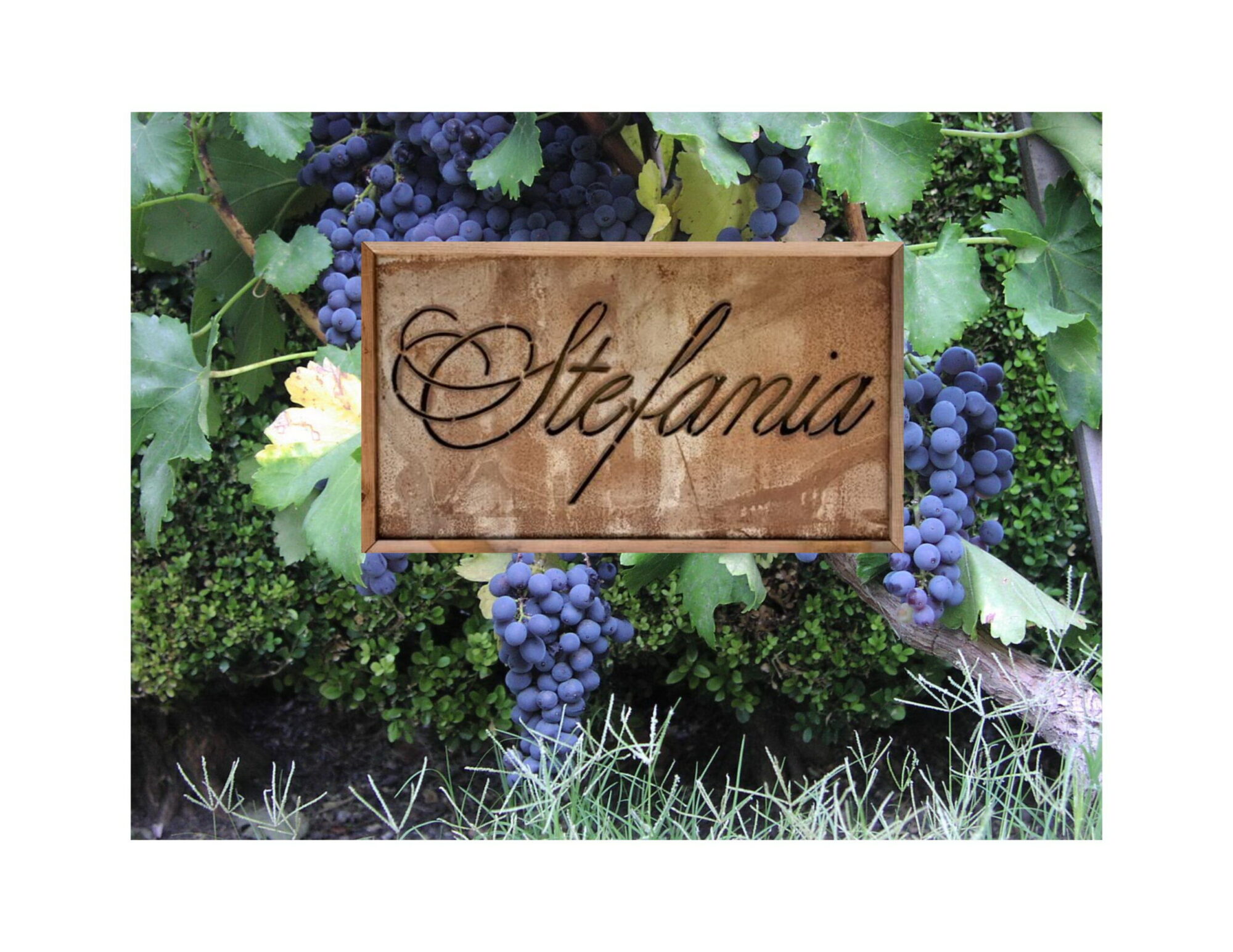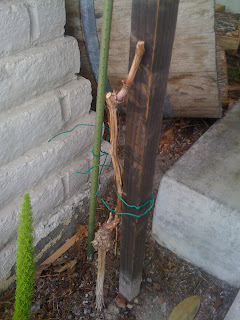Giving a primer after pruning is done may seem weird but it really is better to see finished vines. I hope this will explain some of the terms we’ve been blogging about over the past month.
This is a young vine after pruning. This particular vine is two years old. At this point you want to leave two buds on a spur with the idea of growing two canes for the new year. In California we are usually able to get to this stage after one year, but this particular vine is in the shade on our front porch.
Here’s a good close up of all the parts. The lighter wood is last years growth, the darker wood is older growth. Last years growth was called a ‘cane’ after it grew to full length. Right now as you see it pruned, with two ‘buds’, it’s a ‘spur’. The rings around the new growth and the small dark bit sticking out are the ‘buds’. They will grow this year into new ‘canes’ and will be the part of the plant that produces fruit.
 These are the ‘head’ trained vines in front of our house. Head training is when there are multiple ‘arms’ coming from one ‘trunk’ and each arm contains ‘spurs’ with ‘buds’. On these plants we’ve left one spur and two buds per arm. Most head trained vines have many more buds left, but we train these up a single poll and tie the new canes upright, so we leave fewer buds. Usually in California the canes are left to flop and that creates a ‘bush’ like look. So those are often also called ‘bush’ trained. In the northern Rhone valley the vines are tied up a single stake, and that’s how we do it.
These are the ‘head’ trained vines in front of our house. Head training is when there are multiple ‘arms’ coming from one ‘trunk’ and each arm contains ‘spurs’ with ‘buds’. On these plants we’ve left one spur and two buds per arm. Most head trained vines have many more buds left, but we train these up a single poll and tie the new canes upright, so we leave fewer buds. Usually in California the canes are left to flop and that creates a ‘bush’ like look. So those are often also called ‘bush’ trained. In the northern Rhone valley the vines are tied up a single stake, and that’s how we do it.

This is the last of the original Haut Tubee vineyard in the front yard. Each vine ready for new canes to grow, and you can see the single post they will be tied to.

In the backyard we are converting the head trained plants to a V.S.P system. That means Vertical Shoot Positioning. We are retraining the vines into a ‘cordon and spur’ system. Below you see the first step. We encouraged a new shoot from an old vine and have pruned it back to two buds. These buds will produce a cane each that will be tied to a wire, called the ‘fruiting wire’. After one more year the wood will be older and that will become the ‘cordon’.

Here’s what it will look like after one year. This vine has two ‘canes’ pulled down and tied to a wire. The buds will send up shoots this year, and next year those shoots will be pruned back to ‘spurs’.

At this point this training method is actually called ‘Guyot Simple’. Named after the 19th century Frenchman who invented it. The cane is pulled down and will send fruit producing shoots. Pinot Noir and Chardonnay are often trained this way. One spur is left on the vine and next year the cane that spur produces will be pulled down and tied up this same way after the old cane is cut off.

We won’t do that here. We want the canes to become cordons and produce spurs. This picture gives an idea of the ‘vertical’ in V.S.P. We have nicked out the buds that face downward (That’s where the phrase ‘nick it in the bud’ comes from.) This will only leave shoots going up, or ‘vertical’, and into the supporting wires.




